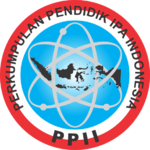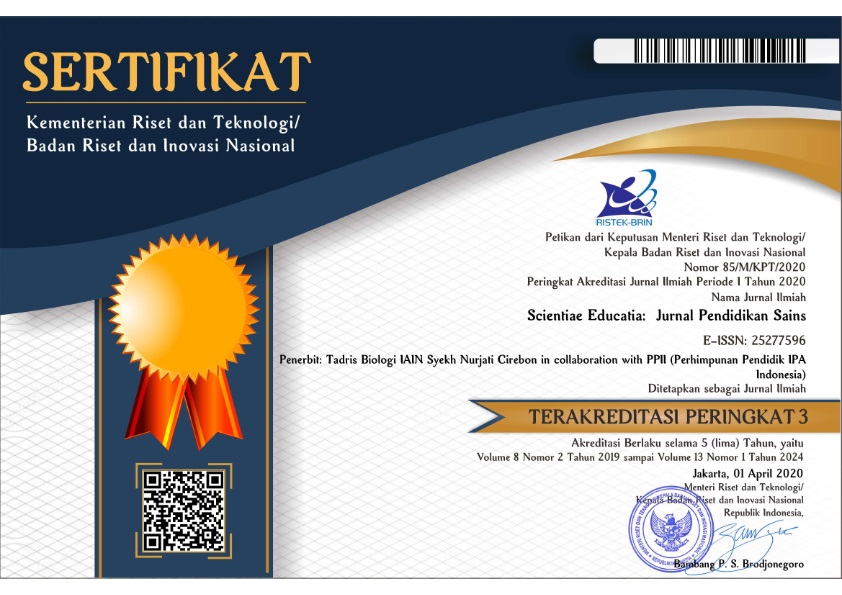STEM for Establishing Energy Literacy in Maritime Vocational Education
(1) Engineering Department, Akademi Maritim Suaka Bahari Cirebon
(2) Engineering Department, Akademi Maritim Suaka Bahari Cirebon
(*) Corresponding Author
Abstract
The development of new and renewable energy is an essential issue in the 21st century that must be delivered to the community, and maritime vocational education has an urgency on the energy literacy for ship engineering cadets. However, learning about energy for engineering cadets still lacks attention. The purpose of this paper is to describe energy literacy, which is reviewed based on the cognitive and affective aspects of cadets in maritime vocational education. This research used the quasi-experiment method, which a total of 61 engineering cadets learned about energy use using the STEM approach. From the results was found that although the achievement of understanding energy literacy from pre-test to post-test score with a small increase but the attitude of cadets towards the importance energy education has 76%, energy-saving attitude on ships 71%, the use of renewable energy 68%, rules on energy use according to ANNEX it must be obeyed is 71%. These results illustrate that it is necessary to continue and add of learning time to increase the cognitive aspects of energy literacy and to improve awareness of the cadets' attitudes about the importance of saving energy and its utilization.
Keywords
Full Text:
PDFReferences
Afriana, J., Permanasari, A., & Fitriani, A. (2016). Project-based learning integrated to stem to enhance elementary school's students' scientific literacy. Jurnal Pendidikan IPA Indonesia, 5(2), 261-267.
Bouvier, S., & Connors, K. (2011). Increasing student interest in science, technology, engineering, and math (STEM): Massachusetts STEM pipeline fund programs using promising practices. Report Prepared for the Massachusetts Department of Higher Education, 74. Massachusetts Departement of Higher Education: UMASS Donahue Institute.
Brounen, D., Kok, N., & Quigley, J. M. (2013). Energy literacy, awareness, and conservation behavior of residential households. Energy Economics, 38, 42-50.
Bryk, A. S., Sebring, P. B., Allensworth, E., Easton, J. Q., & Luppescu, S. (2010). Organizing schools for improvement: Lessons from Chicago. University of Chicago Press.
Bybee, R. W. (2013). The case for STEM education: Challenges and opportunities. Arlington, VI: National Science Teachers Association (NSTA) Press.
DeWaters, J., Powers, S., & Graham, M. E. (2007). Developing an energy literacy scale. In ASEE Annual Conference and Exposition, Conference Proceedings.
DeWaters, J., Qaqish, B., Graham, M., & Powers, S. (2013). Designing an energy literacy questionnaire for middle and high school youth. The Journal of Environmental Education, 44(1), 56-78.
Fives, H., & DiDonato-Barnes, N. (2013). Classroom test construction: The power of a table of specifications. Practical Assessment, Research & Evaluation, 18(3), 1-7.
ISTE. (2007). National Educational Technology Standards. Retrieved from http://cnets.iste.org/students/s_stands.html.
ITEA. (2000) Standards for Technological Literacy: Content for the Study of Technology, International Technology Education Association: Reston VA.
James, E. O., Robinson, M., & Powell, R. R. (1994). Beyond STS: An energy education curriculum context for the 21st century. Journal of science teacher education, 5(1), 6-14.
Jauhariyyah, F. R. A., Suwono, H., & Ibrohim, I. (2018, February). Science, Technology, Engineering and Mathematics Project Based Learning (STEM-PjBL) pada Pembelajaran Sains. In Seminar Nasional Pendidikan IPA 2017 (Vol. 2, 432-436).
Kim, M. (2005). Ethics of Pedagogy in World-Becoming: Contemplations on Scientific Literacy for Citizenship. Delta Kappa Gamma Bulletin, 71(3), 52-58.
Lee, L. S., Lee, Y. F., Altschuld, J. W., & Pan, Y. J. (2015). Energy literacy: Evaluating knowledge, affect, and behavior of students in Taiwan. Energy Policy, 76, 98-106.
Lee, O. (2011). Effective STEM education strategies for diverse and underserved learners. Paper prepared for the workshop of the Committee on Highly Successful STEM Schools or Programs for K-12 STEM Education, Washington, D.C.: National Research Council.
Lynch, S. J., Peters-Burton, E., & Ford, M. (2014). Building STEM opportunities for all. Education Leadership, 72(4), 54–60.
Muna, R, M. (2011). Upaya Menciptakan Energi Hijau dan Pemanfaatan EBT. Makalah Kongres Ilmu Pengetahuan Nasional (KIPNAS) ke X, Jakarta November 2011.
National Research Council. (2010). Framework for science education. Washington, DC: National Academy Press.
NEETF. (2002). Americans' Low Energy IQ: A Risk to Our Energy Future/Why America Needs a Refresher Course on Energy., National Environmental Education & Training Foundation: Washington, DC.
Nowcast. (2005). U.S. Public in the Dark on Climate Change Issues", American Meteorological Society, June, pp. 775.
Roberts, A. (2012). A justification for STEM education. Technology and engineering teacher, 71(8), 1-4.
Roth, C. E. (1992). Environmental Literacy: Its roots, evolution, and directions in the 1990s In Columbus, OH, ERIC/SMEAC Information Reference Center. Retrieved from https://eric.ed.gov/?id=ED348235
Roth, C. E. (1996). Benchmarks on the Way to Environmental Literacy K-12. In Developed by the Benchmarks for Environmental Literacy Project of the Massachusetts Secretaries Advisory Group of Environmental Education, Vol. ED392635. Retrieved from https://eric.ed.gov/?id=ED392635
Rutledge, M. L. (2005). Making the nature of science relevant: Effectiveness of an activity that stresses critical thinking skills. The American Biology Teacher, 67(6), 329-333.
Setiawan, W. (2009). Menuju Cita-cita Penyediaan Energi yang Bertanggung-Jawab:Konversi Energi Bebas Emisi. In Prosiding Seminar Nasional Teknoin. Yogyakarta.
Sugiyono. (2011). Metode Penelitian Kombinasi. Bandung; Alfabeta.
United States Department of Energy. (2013). Energy literacy: Essential principles and fundamental concepts for energy education. Washington, D.C.: U.S. Department of Energy.
Wagner, T. P., McCormick, K., & Martinez, D. M. (2017). Fostering STEM literacy through a tabletop wind turbine environmental science laboratory activity. Journal of Environmental Studies and Sciences, 7(2), 230-238.
Zamista, A. A. (2018). Increasing Persistence of College Students in Science Technology Engineering and Mathematics (STEM). Curricula: Journal Of Teaching and Learning, 3(1), 22-31. doi: 10.22216/jcc.2018.v3i1.1308
DOI: 10.24235/sc.educatia.v8i2.5520
Article Metrics
Abstract view : 153 timesPDF - 103 times
Refbacks
- There are currently no refbacks.
Scientiae Educatia: Jurnal Pendidikan Sains indexed by:

This work is licensed under a Creative Commons Attribution 4.0 International License.



1.png)












